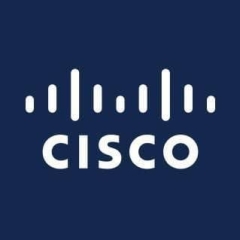What is our primary use case?
Typically, the solution is used for a client's official network and several times as a replacement. A client may use it to replace the total network LAN switch.
What is most valuable?
Mostly the LAN switching is the most valuable aspect of the solution.
Clients often do not emphasize specifications of Catalyst features. They just need a switch for an office LAN and other segments.
What needs improvement?
There are several versions of Catalyst, and yet, they are quite similar. If, in the simplest one, they could create a Catalyst segment where all the possibilities like QSFP, SFP, 10G, that would be ideal. MikroTik, a Latvian company, has that as an option. They include 1G and 10G and QSFP all in one switch. Cisco, however, divides it into several switches across these features. Cisco is likely doing it to make money. However, clients sometimes don't want to pay more for the switches and they ignore Cisco and grab other brands like MikroTik. As distributors, it makes it hard to sell Cisco when features come at such a high price.
Another issue is the restrictions on the product. Cisco applies restrictions in relation to renewals on a yearly basis. Many other brands don't have restrictions. If Cisco lifted them, they wouldn't lose so many clients to competitors.
For how long have I used the solution?
We've been using the solution for a long time. It's been about seven to nine years.
What do I think about the stability of the solution?
The product is quite stable. It doesn't crash or freeze and there aren't any bugs or glitches. It's quite reliable.
What do I think about the scalability of the solution?
You can scale the solution and you can choose different versions that fit the sizes of a variety of organizations.
Our clients range in size. Some are smaller organizations. Others are enterprise-level companies.
How are customer service and technical support?
We talk with the support that is based in Bangladesh. They have an office in our country and provide support as necessary. We have contracts for one to three years and they provide technical and phone support to us. The support is fine, but it takes time sometimes to get the assistance we require.
Which solution did I use previously and why did I switch?
As resellers, we work with other solutions, including Huawei, Juniper, MicroTik, and some other brands in China (as well as Cisco).
Recently, Huawei has been doing good in switching segments. They're bringing some new features that are better than or compete with Cisco, and they are very aggressive in pricing.
The problem is they're doing only Enterprise segments. They are not doing SMB.
How was the initial setup?
The initial setup isn't too complex. However, we have very well trained technicians that really understand the process. For them, it's easy.
If our clients request it of us, we can maintain the switches for them after implementation.
What about the implementation team?
We can assist our clients with implementation if they request the service.
What's my experience with pricing, setup cost, and licensing?
The pricing of Cisco products is quite expensive. Huawei, for example, costs much less.
There aren't extra costs for additional features. All features are standard.
What other advice do I have?
We are resellers and distributors. We're partners with Cisco.
We use a variety of different versions of the solution, including 3003, 29603, and 9003. Those are three of the most popular. Which we use depends on the client and their particular needs. Sometimes we only resell the product to our clients and sometimes we also provide the solution and install and configure the Catalyst for the clients. It depends on the client's query.
Overall, I would rate the solution eight out of ten. Overall, our clients have been quite happy with the results they get from Cisco products.
Disclosure: My company has a business relationship with this vendor other than being a customer: Partner
















